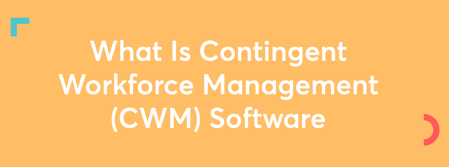How to Manage Contractors With Just One Tool
- 20 Dec 2021
- 7 mins read
- Posted in
Updated: 27th of February 2025
A lot of managers who are hesitant about working with freelancers and contractors because they’ve had bad experiences in the past have one thing in common. They mistakenly believe that since external workers are not permanent members of their teams, they do not need to manage contractors.
While it is true that an employer’s responsibility towards freelancers and contractors is much lower than that towards their employees, that’s only when it comes to things like providing perks, benefits, equipment or training opportunities. Putting in the time and effort to manage one’s external workers on the other hand, is an investment that’s well worth it.
Most ‘bad’ contractor and freelancer engagements are usually a result of poor management, leading to various issues like miscommunication, missed deadlines, poor quality of work and even data leaks. However, managing one’s external workers need not be overwhelming or complicated either — with a little organization and the right toolkit, these common issues are easily sidestepped. Here's how to manage contractors effectively:
10 ways to manage contractors
1. Have a proper infrastructure in place
The first mistake that many managers make when working with and managing contractors is to rely only on basic tools like spreadsheets. While this works as a temporary solution for the first handful of contractors, it quickly spirals out of control with every new external worker you bring on board. Having to update the data manually every single time is extremely tedious and time-consuming.
What’s more, this method leaves some glaring gaps in your freelancer management strategy too — you can’t store complex data and files on a spreadsheet, you still need to communicate with your freelancers through various emails and apps, and it doesn’t account for processes like onboarding and payments. On the contrary, opting for a solution that is specifically designed to manage contractors and freelancers makes it easy to handle every aspect of the contractor engagement — even the ones that you may not have foreseen!
2. Hire right
Unfortunately, this is another area where managers often do not spend much time and effort when figuring out how to manage contractors, because a contractor is not a permanent hire. Ensure you hire the right person for the job by vetting your candidates’ resumes, portfolios and work samples. An assignment or a quick test can also be a good idea at this stage — it can help you ensure that your shortlisted candidate has the right skills for your specific requirements.
However, you don’t necessarily have to spend hours sorting through resumes and testing candidates’ skills one at a time in order to get this right. Look for freelancer and contractor marketplaces that give you an extensive database of skilled professionals. Many of these marketplaces will have advanced filters that enable you to sort through the database in minutes. A few clicks can find you someone with exactly the relevant skills, experience and rates that you are looking for.
3. Set expectations
Before you go looking for the perfect freelancer or contractor, do ensure that you and all your internal stakeholders are on the same page about the requirements. There’s nothing more confusing for a freelancer than when different people from the same company reach out to them with wildly contrasting directives and feedback. Setting project expectations when you manage contractors will enable you to start looking for a contractor with a clear scope of work, that tells them what skills you are looking for, what results you need to drive, by when and for how much.
4. Make them feel included from Day 1
Being the new kid in school is never fun, and unfortunately, many contractors end up feeling just that way. After all, it’s easy to feel excluded and confused when they don’t yet know their way around the project and don’t know whom to approach for help or clarifications.
Having a proper onboarding process is a simple way to make your new contractors feel welcome and at ease when managing a contractor. This includes getting the necessary paperwork out of the way first. Ensure that you have them fill out your company forms, sign the relevant contracts and NDAs, and agree upon the payment terms. Don’t forget to store these crucial documents securely and in one place. Then, create the required IDs for them to get on to your system, and give them access to whatever tools they need to do their jobs. Finally, conducting a friendly Zoom session can be a nice way to introduce them to key team members with whom they’ll be working.
5. Equip them with everything they need to do their job
Once onboarded, your contractors will need a well-defined brief outlining the specific requirements of the task you need them to deliver. Now that they have signed an NDA, you can safely give them access to any raw data or proprietary company information that they might need to do their job.
When you have multiple freelancers and contractors working on the same project, and you are communicating with each of them individually over email, it is all too easy to lose track of who has access to what information. This is why having one central communication channel is extremely helpful — it ensures that everyone on the team can view the same information, and there are no unnecessary bottlenecks in getting new freelancers up to speed.
6. Keep them in the loop
Did your company just announce a huge partnership? Did your team hit a major project milestone? Received a message of appreciation from that new client? Since your contractors are not a part of your organization, they don’t get to hear the buzz in the office. As a result, they often find themselves out of the loop on important updates. At best, it makes them feel excluded and unmotivated. At worst, it gets in the way of them doing their job well — for example, in case there’s a change in direction of the project they are working on.
That’s why it’s important to have regular conversations where you share progress, feedback and even general wins and successes of the organization. A simple way to do this is to add them to your team channels and groups where people communicate frequently. This will give them a chance to stay abreast of what’s going on, and build a rapport with the people they work with.
7. Avoid micromanaging them
How to manage contractors effectively? When you are working with multiple contractors, it is easy to lose track of who is handling which task. Many managers deal with this by resorting to micromanaging — they check in on freelancers all too frequently, follow up about their progress, and try to offer feedback on work in progress. Needless to say, this can be uncomfortable and frustrating for freelancers. Moreover, in some cases, this can lead to compliance issues as well. Freelancers and contractors, by definition, are entitled to work at their own time and pace, and clients cannot legally dictate how, when, and where they work.
Investing in a good project management system is a great solution here. It gives you visibility on your project progress and keeps you on top of who is working on what. You can communicate expectations and deadlines to each freelancer, assign the relevant tasks to them, and then step back and let them work at their own pace. If needed, you can always set up work milestones where you check in with them at agreed upon dates. This proves a lot less stressful, both for you and for your external workers.
8. Offer feedback
This can be a crucial step in contractor management. Without any constructive feedback, your external workers might never know whether or not their work met your standards. Set aside a little time to connect with your freelancers and tell them what they did right, where they went wrong, and how they can improve. This lets them know exactly what you are looking for, and gets you better quality work the next time around. After all, fostering a long-term freelancer relationship is a lot easier than reinventing the wheel and hiring new people each time.
9. Pay well and on time
An overwhelming majority of external workers report having faced payment issues in the past. And that is the top reason why they may not want to work with a particular client again in future. But sometimes, you may not be able to help a delay. After all, it takes time to sort through the hundreds of invoices that are flooding your inbox, cross-check timesheets, and send them to the accounts team to be processed.
But these are all issues you face when you handle payments manually — automate the process, and these delays go away. A good freelancer and contractor management system will let you set up payment details while onboarding your external workers. It will then automatically track their time, generate worksheets, disburse payments and maintain audit trails for you with every invoice paid. This ensures that payments go out on time every month without fail, thus letting you build a relationship of trust with your external workers. What’s more, you get to focus on the big picture rather than getting caught up with the more mundane aspects of freelancer management.
10. Know how to reach them again
Finding a really good freelancer or contractor is effort-intensive and time-consuming. So when you find someone great, it’s a good idea to add them to a company-wide database so you and other managers in your organization can reach out to them again in future. But what happens when a manager forgets to update the database, or enters the wrong contact details by mistake? And what about when the database grows to hundreds, and it becomes difficult to find someone with the relevant skills unless you use exactly the right keywords?
Having a database management tool with a searchable directory is exactly what you need to get around these issues. It makes it incredibly easy to find the right person for the job — even if you haven’t personally worked with them in the past. Look for a tool that offers sophisticated filters so that you can shortlist candidates based on everything from their geographic location and languages spoken, to their years of experience, their rates and more.
Getting freelancer and contractor management right
To sum it up, the definition of contractor management today is very different from what one would have imagined, even a few years ago. It no longer requires managers to spend their entire day fielding calls, trudging through endless paperwork and getting mired in logistical tasks. The right set of tools can automate much of this process, and leave the manager free to actually offer valuable input and guidance to make the project a success.
How to manage contractors well? The secret lies in building the right toolkit. You can opt for separate tools for project management, communication, timesheeting, payments, database management and more. Indeed, you might already be using certain tools for some of these needs.
How TalentDesk redefines freelancer and contractor management
TalentDesk, however, offers an easier way by integrating all these functions into one comprehensive solution. Its cloud-based data storage functionalities make onboarding a breeze by letting you store documents, NDAs, contracts and SOWs securely in one place, while its database management capabilities let you hire quickly and effectively. Its project management functions let you assign tasks, track progress, keep an eye on budgets and plan deadlines without micromanaging.
With TalentDesk’s centralized communication features, you can share information safely through one platform, rather than having information scattered across various mailboxes. It also ensures your freelancers and contractors can communicate with you and with each other, thus building relationships.
Of course, the payment capabilities that TalentDesk offers is incredibly exciting as it tracks timesheets, consolidates all your invoices, and enables you to make a single payment each month. Disbursing the approved amount to each contractor is then completely automated.
In case you are already using certain systems and solutions to manage these tasks, TalentDesk also enables you to integrate them within its platform, so you can still enjoy one comprehensive solution. It is thus a great way to manage contractors — without any of the hassle of traditional contractor management processes.

Sanhita Mukherjee
Speak to us to find out how we can help you manage your contractors more efficiently
Related articles
10 Best Freelancer Management Software (FMS) Tools to Consider in 2025
10 Best Freelancer Management Software (FMS) Tools to Consider in 2025
Explore top 10 Freelancer Management Software tools to consider in 2025. Centralize hiring, streamline onboarding, compliance & simplify global payments
Integrating Accounting Systems with Freelancer Platforms
Integrating Accounting Systems with Freelancer Platforms
Read how integrating freelancer platforms with accounting systems transforms your operations. Streamline payments, compliance & gain real-time visibility.
What is Vendor Management and how does it help?
What is Vendor Management and how does it help?
Discover how vendor management can improve cost-efficiency, reduce risk, and support innovation. Learn about lifecycle stages, best practices & challenges.
.png?width=650&height=167&name=what%20is%20a%20vendor%20management%20system%20(vms).png)
What is a Vendor Management System (VMS)? A Complete Guide
Looking for a VMS? Compare top vendor management systems, explore key features, and learn how automation can streamline your contractor workflows.
Best Contractor Management Software for 2025
Best Contractor Management Software for 2025
Discover the best contractor management software to streamline workflows, ensure compliance, and simplify payments. Manage global contractors with ease.

Mastering Influencer Management: Strategies for Effective Collaboration
Our guide to influencer management, exploring strategies, tools, and tips to create successful influencer relationships and enhance your marketing impact.

10 Reasons Why You Don’t Need a Contractor Management System
Discover 10 hilarious reasons why you absolutely don’t need a contractor management system - because who needs efficiency, happy freelancers, or sleep?

2024 Engineering Recap
See how we enhanced features and added automation in 2024 to improve TalentDesk user experience. Here's a full recap and a look ahead to 2025.

What Is Contingent Workforce Management Software?
Discover how contingent workforce management software enhances cost savings & access to talent. Learn about essential tools, compliance & best practices.

Deel vs. the Competition: Discover the Best HR Software Alternatives
Discover the best Deel alternatives for global HR management. Compare features, pricing, and reviews to find the best solution for your global workforce.
